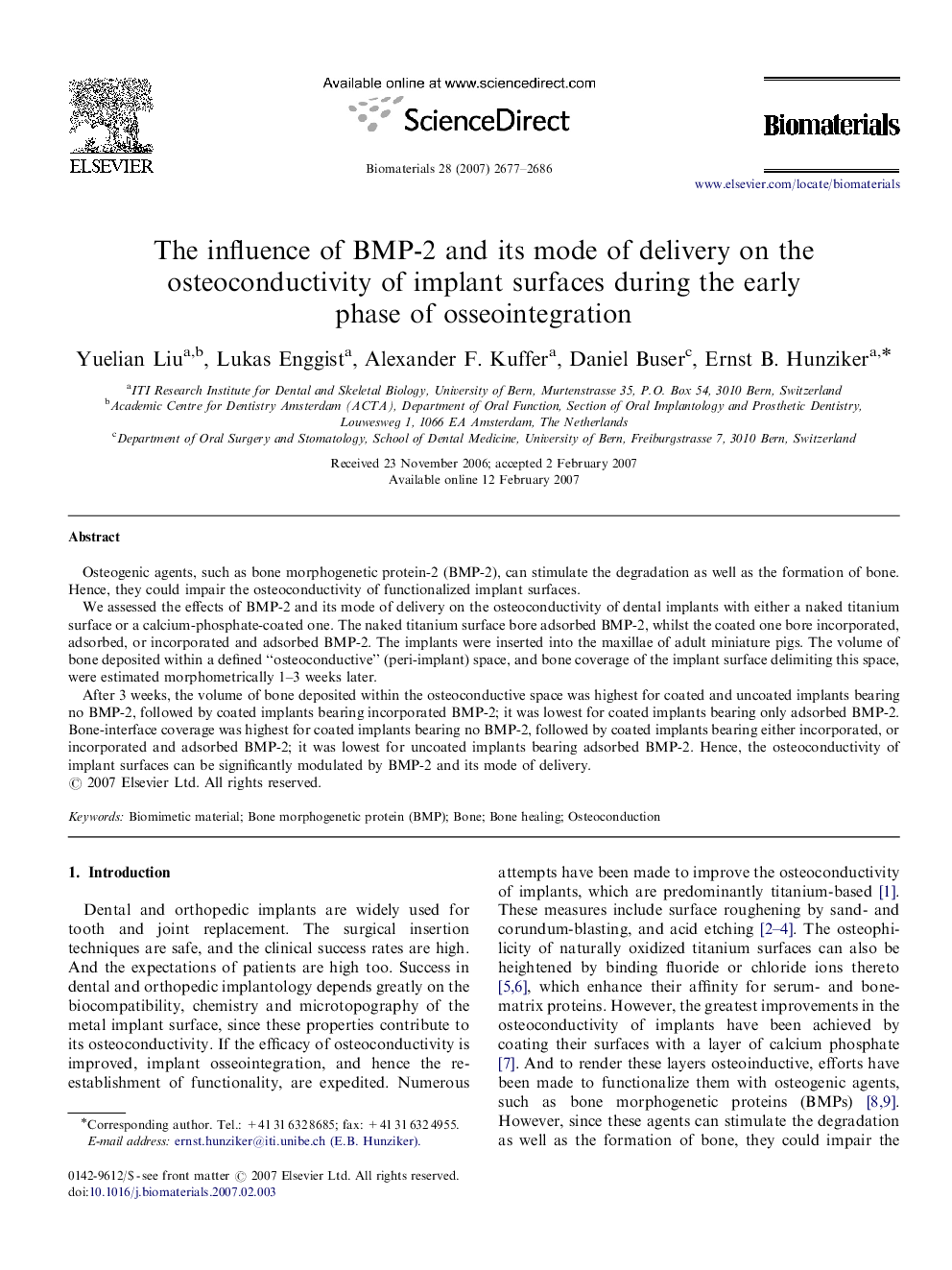| کد مقاله | کد نشریه | سال انتشار | مقاله انگلیسی | نسخه تمام متن |
|---|---|---|---|---|
| 10077 | 662 | 2007 | 10 صفحه PDF | دانلود رایگان |

Osteogenic agents, such as bone morphogenetic protein-2 (BMP-2), can stimulate the degradation as well as the formation of bone. Hence, they could impair the osteoconductivity of functionalized implant surfaces.We assessed the effects of BMP-2 and its mode of delivery on the osteoconductivity of dental implants with either a naked titanium surface or a calcium-phosphate-coated one. The naked titanium surface bore adsorbed BMP-2, whilst the coated one bore incorporated, adsorbed, or incorporated and adsorbed BMP-2. The implants were inserted into the maxillae of adult miniature pigs. The volume of bone deposited within a defined “osteoconductive” (peri-implant) space, and bone coverage of the implant surface delimiting this space, were estimated morphometrically 1–3 weeks later.After 3 weeks, the volume of bone deposited within the osteoconductive space was highest for coated and uncoated implants bearing no BMP-2, followed by coated implants bearing incorporated BMP-2; it was lowest for coated implants bearing only adsorbed BMP-2. Bone-interface coverage was highest for coated implants bearing no BMP-2, followed by coated implants bearing either incorporated, or incorporated and adsorbed BMP-2; it was lowest for uncoated implants bearing adsorbed BMP-2. Hence, the osteoconductivity of implant surfaces can be significantly modulated by BMP-2 and its mode of delivery.
Journal: Biomaterials - Volume 28, Issue 16, June 2007, Pages 2677–2686